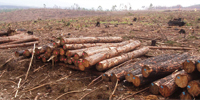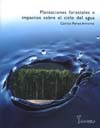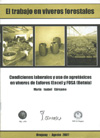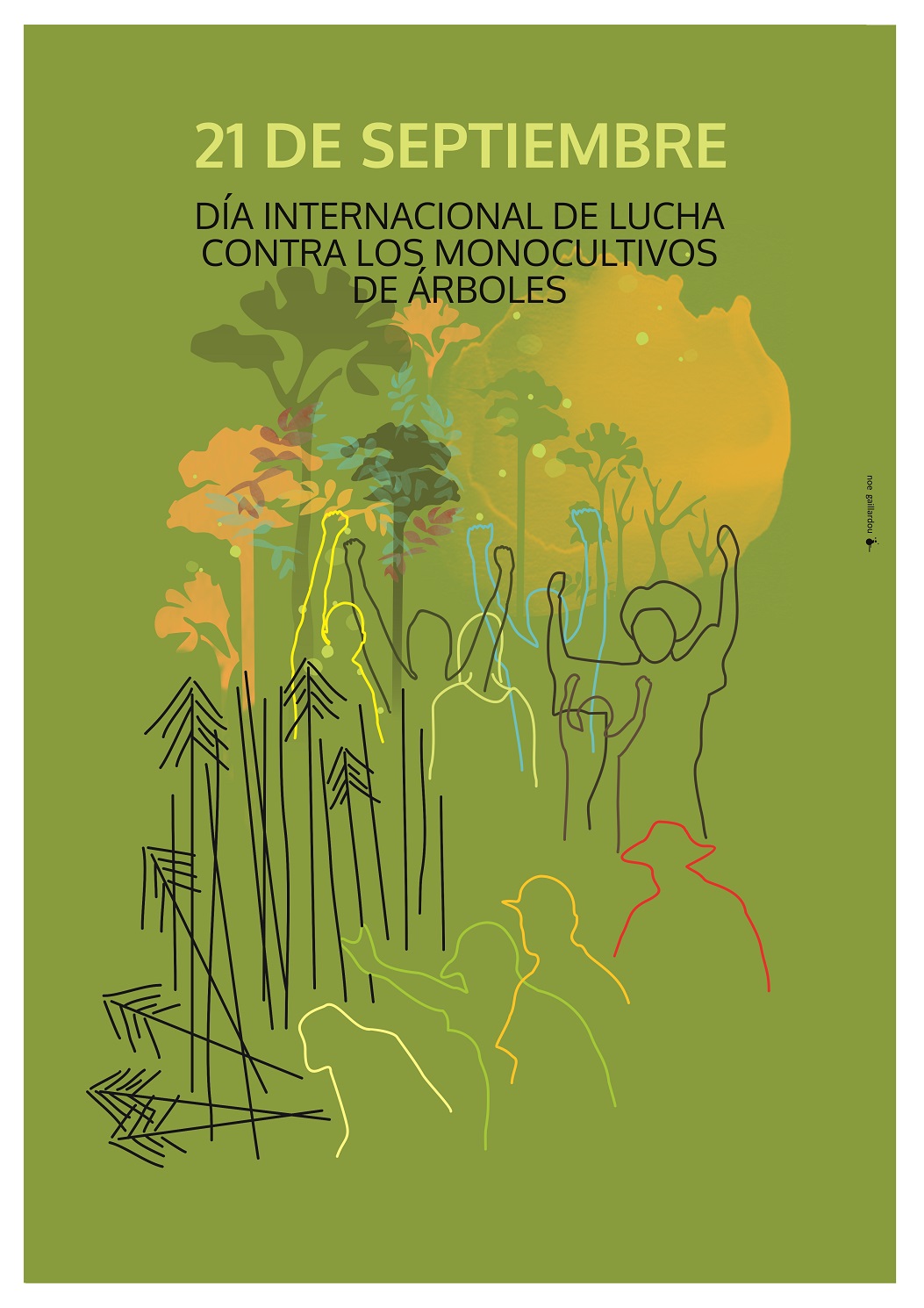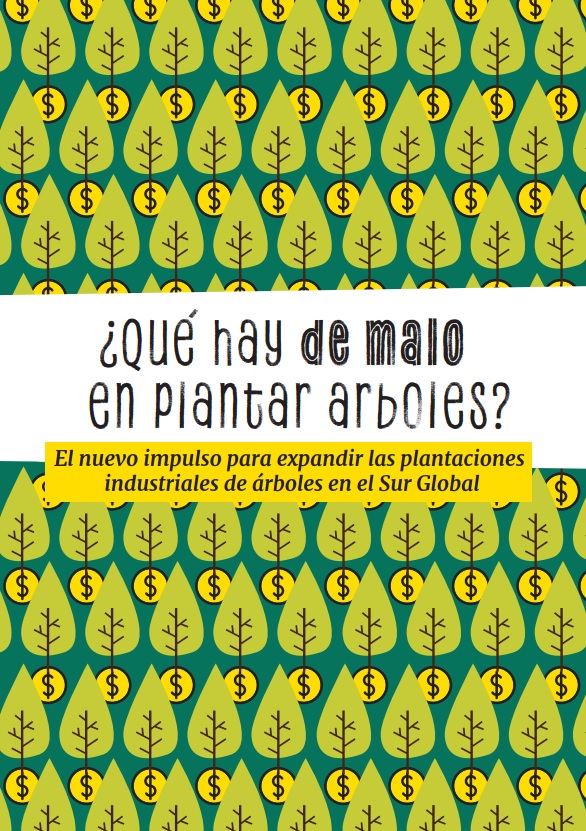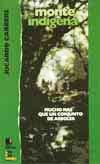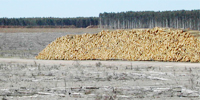On unsettling the basic social and economic features of the country’s productive activities, the conversion of Uruguay into a timber enclave has also started to alter the traditions that are part of the rural cultural universe. (*)
By Victor L. Bacchetta
As a rural teacher and as a writer, Gonzalo Abella has investigated the cultural roots of Uruguay, looking into camp-fire legends, Christian, Indigenous and European non-Christian roots, associating himself with folklore associations, with Afro-American worship, and also with the comparsa lubola** and its religious traditions.
In this process, how did you become an environmentalist?
As much from the pain of rural areas because of its lost horizons, as from the pain of rural schools because of the children expelled, and from the environmental feeling of religions and the most ancient Afro-American rites, everything led me to the environment. Also, as a long-standing left-wing militant, the issue has interested me because of its political dimension. Environmental defence in Latin America must convoke intrepid scientists (who are few) and ancestral thought, even mystic thought, linked to the cycles of nature. I try to understand grass-roots religiousness, which does not directly concern me, but which does concern deep sections of our people in its transforming potential.
What have you found?
For example I have seen that sometimes a rural worker who voted for the “Guapo” (he refers to Jorge Larrañaga, candidate of the Partido Blanco), is much clearer about forestation than a trade-union worker who voted the strongest left wing groups. On this basis I thought that I could provide a link between scientists and this rural way of thinking that has a profound diagnosis, an alternative proposal, but that has no interlocutory.
How do you do your work?
I do it on the basis of my books, related with identity, regional projects, the history of Artigas, the descendants of the Charrúas, the rites associated with death, baptism, that still remain in the most isolated regions of our rural areas. People like you to give them back an image of their reality, with respect. This has also taken me to Corrientes, Rio Grande do Sul, Entre Ríos. I have been in Gualeguaychú many times and have seen the grass-roots process of building up a popular way of reflection that is totally different from the demagogy of some Argentine politicians who use the issue of the pulp mill towards their own interests. I do not feel myself to be a foreigner in Entre Ríos, or in Corrientes, or in Rio Grande do Sul.
What effects of the growth of this process have you seen on the people?
I think the most terrible effect is that of the official lie. Because people see the problems, the lack of water, rural schools closing down, and the authorities tell them that this phenomenon of rural exodus is as old as Uruguay itself. Or that the problem of the lack of water is a local problem. And a technician that warns them not to link eucalyptus plantations with the lack of water because water moves underground according to slopes that we know nothing of. Yes, certainly your bees have died, but that is due to poor management… That is to say, the complicity of the authorities of all the political parties to explain the negative impacts as an exclusively local problem, which is paid by courses, training, and loans generously given to close peoples’ mouths.
What does this imply for the future of Uruguay?
What anguishes me most is that they are gradually “vaccinating” us. The plan must no longer be for four million hectares, now it must be 16 million hectares of plantations because they are going to install plantations everywhere. At the end of 2006 I was in Cerro Largo, in Melo, for a wedding and I started talking to people who have offices of rural businesses. I told them: “I am interested in talking to you because the future of the country is in the rural business offices.” And they answered: “You are right Abella, we cannot complain, all Cerro Largo has been bought up by the timber companies.” And to my amazement, they replied: “What happens is that they have immediately drawn up contracts for grazing with the former owners of the land. But when you come back four years from now, you won’t recognize the place.” So I asked the notary and she ended up by recognizing that all Cerro Largo is to be planted with trees. When we were in Soriano, we reached an area that was not planted and a man came up to us and said: “See, the people of the timber companies have purchased a lot more land than what is under plantation. They told us that they are going to wait for the troubles in Gualeguaychú to end in order to start plantations here.” With the expansion of monoculture tree plantations by the design of the World Bank, Uruguay is being transformed into a timber enclave. The economic proposal is to fill up the gas tanks of cars and supply luxury paper for consumption in the North and the other is the destruction of our identity. The destruction of fertile grasslands and water is to mutilate the possible contribution of Uruguay to a process of continental liberation.
How do you see the left-wing process? Is it necessary to reconsider its’ definition?
Of course we must reconsider things. Under conditions of environmental contamination, what does the struggle for the full development of productive forces mean? The left can only be reformulated on the basis of Artigas’ thought, which I perceive today as being something that is a matter of life or death, the multicultural dimension of processes. Even in countries that do not have any indigenous communities, because in grassland ecosystems the originating communities were more destroyed, in our rural world we have an enormous perception of medicinal herbs and ecosystem wisdom coming from the indigenous transfer. We need to recover that memory, that wisdom, those values, very quickly.
Artigas and his thought are brought out for different purposes. What Artigas are we talking about?
Artigas suffered a military defeat in 1820 and a political defeat with the 1830 Constitution, but he turned out to be victorious in the heart of the people, to such an extent that, as he cannot be defeated, he has to be falsified. Finally, Artigas is not the creator of a proposal; Artigas is a pupil of an eighteenth century America, where Indians, Negroes, poor people and a re-reading of Christianity, find ways of proposing an America for everyone. Artigas is careful between 1811 and 1815, he tries to link what I would call a duality of powers, the radical campfire communities and the moderate city councils. In 1815 his agrarian reform, a very moderate one (he didn’t even abolish slavery) leads those in favour of slavery and the large land owners to prefer anything to the General. It is the Portuguese invasion and the radical time of the campfire communities, when the city councils go over to the other side. Artigas is a circumstantial expression of a process of Latin American liberation that has been building up for 514 years and of which the wars of independence are merely a juncture in a much deeper process. The people do not want wars, because in wars, the rich put in investments and the poor put in the dead. The poor always prefer –in the Gaucho world, in the world of the cattle tethering post, in the world of the quilombos***– to form their own free spaces and defend themselves. What kind of flag was flying in the capital cities did not bother them too much.
How do you think this could be started?
We must surround Gualeguaychu. Today Gualeguaychu; is an Artigas like decorum, it is a referent for the landless, the Mapuche, for those who approach the Río de la Plata. I am talking about the organized grass-roots that are taking measures. History will set down with admiration and gratitude the struggle of this small town. What is going on in Entre Ríos is an example that goes far beyond cutting off the bridge, it is a process that cannot be stopped, that generates an embryo of proposals for public policies, like those occurring in Colonia with the movement for a Multi-productive Natural Uruguay, and perhaps in Tacuarembó with the 10 September Movement.
* This note is part of a series of interviews that the author carried out with representatives of NGOs and various research workers in the framework of the imminent launching of the Botnia plant. The interview was published in the Uruguayan weekly newspaper “Brecha”, 5 October, 2007. http://www.brecha.com.uy
Translator’s notes:
**The ‘Comparsa Lubola’ (Black Masquerade) or Carnival ‘Lubola’, is a ritual with profound religious symbolic content, dating back to the ceremonies of a closed and secret Candombe cult of Spanish Colonial times.
*** Quilombo: A refuge where runaway slaves used to hide.


